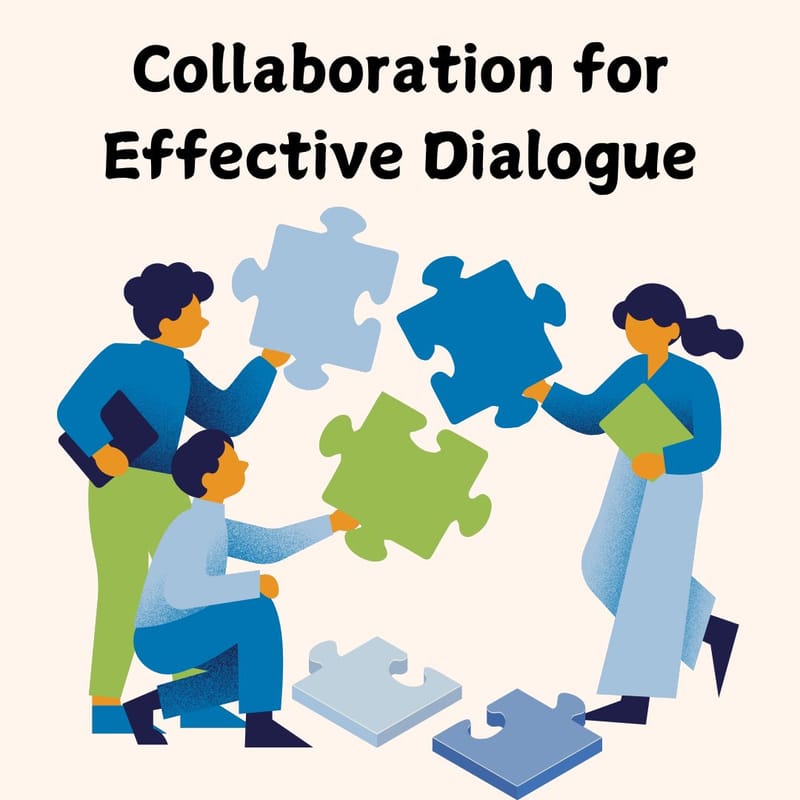Collaboration for Effective Dialogue

ELAL Learning Outcomes (Knowledge) - Collaborative processes include building trust by listening to, acknowledging, and accepting the contributions of others. Collaborative and effective dialogue includes consideration of the perspectives of others and use of respectful language. Adaptability and compromise can lead to consensus in collaboration activities.
Through this lesson, students will learn what collaboration is and its related terms. They will identify different collaborative styles and when they have demonstrated these styles or have seen someone demonstrate these styles in group work. They will apply what they have in the production of a multimedia presentation about Collaboration.
Key vocabulary:
Collaboration - working together with others to share ideas and diverse skills for a common purpose.
Active listening - this skill goes beyond simply hearing the words but also actively processing and seeking to understand the meaning of the message.
Respect for diverse opinions - acknowledging that others may have different opinions from their own but acknowledge these differences by listening and showing respect for others.
Compromise - to agree to give up something you want if the other person(s), who has different opinions from yours, gives up something they want in order to resolve the situation and move forward on the project.
Conflict resolution - the skills that enable a person to quickly, respectfully, and effectively solve a conflict. Other important additional skills include assertiveness, active listening, problem-solving, empathy, and effective communication.
There may be additional terms that need to be defined.
Lesson:
Outcome: Students will define collaboration and its additional skills. They will reflect on the different types of collaborative styles and which style they most closely fit. They will apply their learning toward the completion of a multimedia project on the theme of Collaboration.
Activity - Part 1:
Send a link to students through Google Classroom to enable them to access the virtual whiteboard you have created. Here is a sample of what the board looks like:
Clickup - What is collaboration?
Key Questions:
What is collaboration?
When do we need to collaborate?
Can it be difficult to collaborate? Why? and in what situations? (talk about experiences with group work)
What skills do you need in order to collaborate well? (active listening, problem-solving, assertiveness, compromise, etc.)
Do different people within a group have different collaborative skills?
Have the students use these questions and others that arise from the discussion to share their thoughts on the sticky notes. Reorganize as needed or have one or two students do this part. Once you have discussed thoroughly to arrive at a clear understanding of the key terms and questions, identify the 4 main collaborative styles: the contributor, the coordinator, the communicator, and the challenger. (Taqaddam, My Life Skills, https://www.britishcouncil.org/education/skills-employability/success-stories/taqaddam-programme)
The contributor - the person who contributes ideas and solutions to problems, content.
The coordinator - the person who organizes the group and the content, identifies what needs to be done, and assigns tasks.
The communicator - the person who listens and responds to the ideas and suggestions of others, who clarifies what is being said in order to keep the communication and project itself going forward.
The challenger - the person who questions and challenges the ideas being presented, looking for better and stronger ideas, for better understanding of the content, for a better end product.
Ask the students whether these roles adequately describe what they have seen in group work. What roles are missing? Which one most closely matches you? Can you identify others that match each of these styles and why?
Part 2: